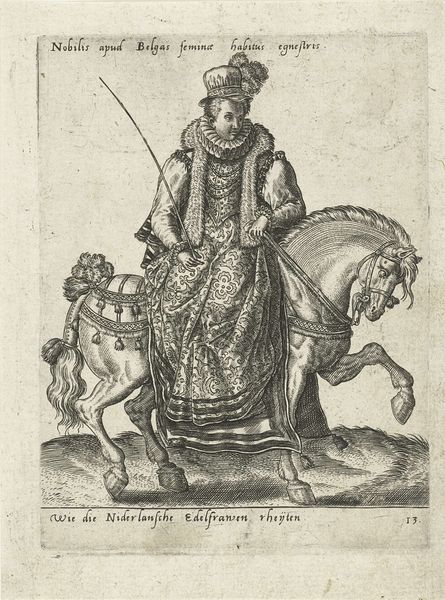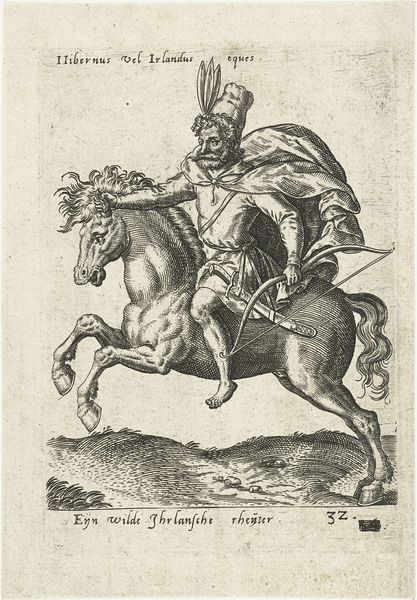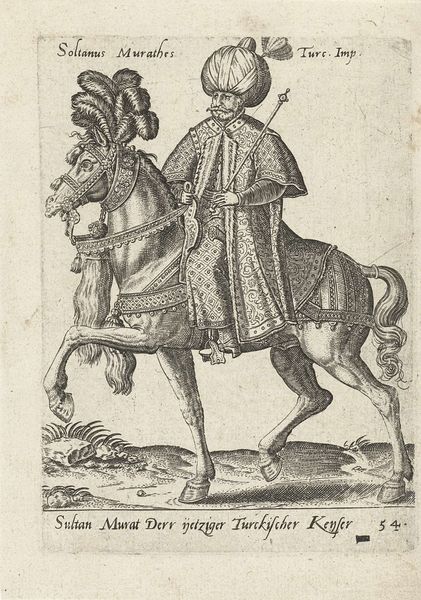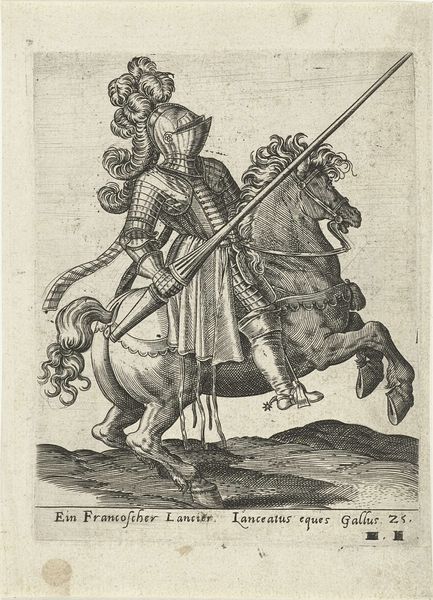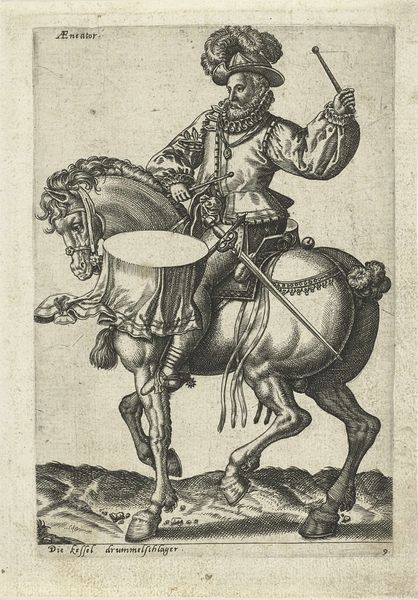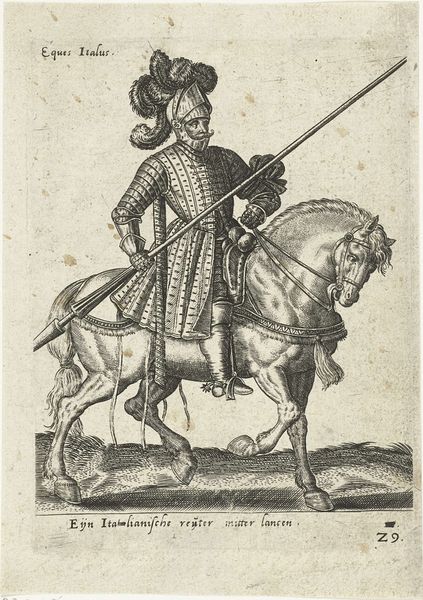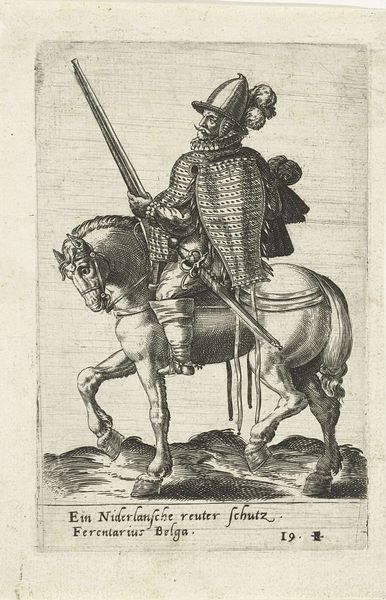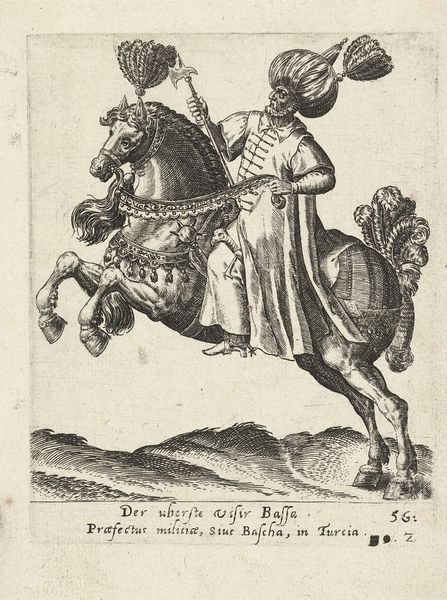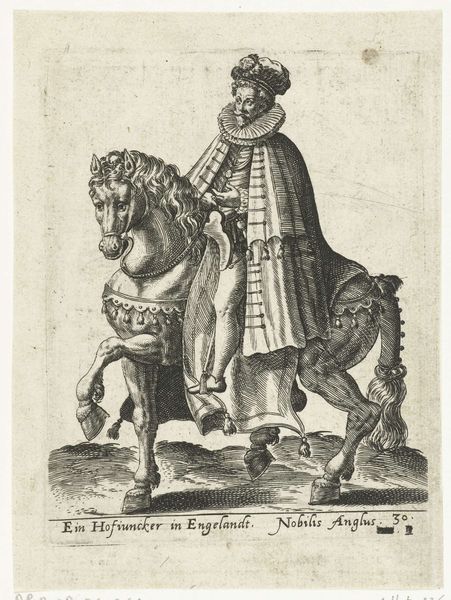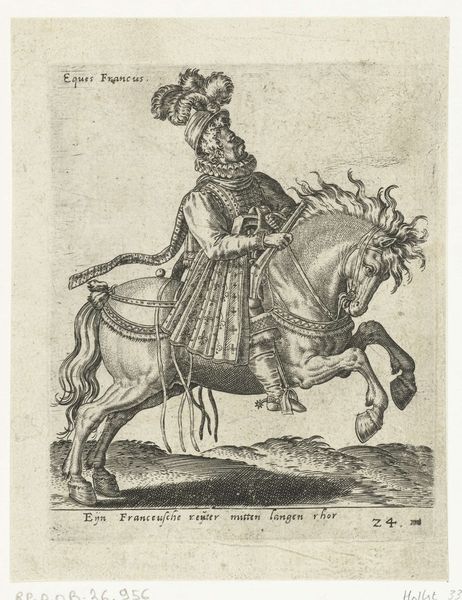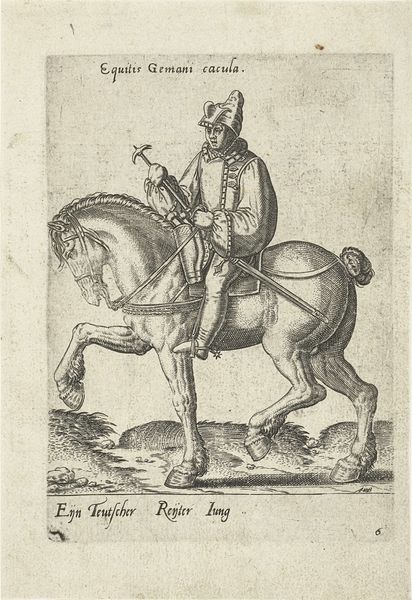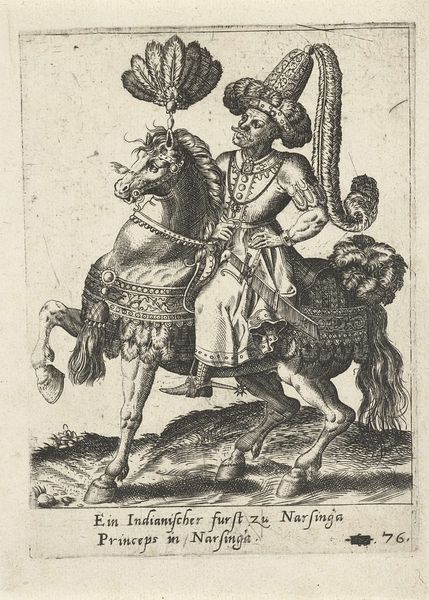
print, engraving
#
portrait
# print
#
old engraving style
#
figuration
#
11_renaissance
#
history-painting
#
engraving
Dimensions: height 144 mm, width 118 mm
Copyright: Rijks Museum: Open Domain
Curator: Abraham de Bruyn created this engraving, "Moskovitische officier te paard," in 1577. It’s held in the Rijksmuseum's collection. What's your first impression? Editor: Intriguing. There's an almost unsettling blend of opulence and… something slightly menacing. The officer's attire, the feathered horse trappings – they speak to status, but his serious expression complicates that narrative. Curator: I see it too. Considering its historical moment, that seriousness resonates. The image reflects burgeoning Western European interest, even anxiety, regarding the power and culture of Muscovy. His regal adornments underscore that he is very different from the period’s typical European military officer. Editor: Absolutely. The image fairly shouts of the “other.” Note the officer's staff with the radiating sun emblem. We see a figure wielding considerable spiritual and temporal authority combined. Given the context of printmaking, circulating images, what message do you believe de Bruyn tried to convey? Curator: That’s a great question. I'd argue he's not just depicting a Muscovite officer, but contributing to the construction of a Muscovite identity for a Western audience. By visually emphasizing certain attributes—the exotic clothes, the commanding posture, the spiritual insignia—he feeds into an emerging narrative, likely tinged with both admiration and trepidation about the power and the unfamiliar cultural mores from that region of Europe. Editor: Precisely! The details tell the story. Take, for instance, the drum hanging on his side. What might otherwise signify merely military presence, given his commanding attitude, almost symbolizes the beating heart of a powerful nation and formidable empire. That's a visual echo of potent cultural forces, if I ever saw one. Curator: I agree. And by circulating these prints, De Bruyn participated in a wider cultural discourse. It underscores how artistic choices could simultaneously reflect existing prejudices and shape new ones about entire groups of people. It’s vital to question those images with our understanding of today’s discourse and beliefs, especially. Editor: I'll say. Understanding what it signified back then lets us scrutinize our perspectives today.
Comments
No comments
Be the first to comment and join the conversation on the ultimate creative platform.

